Brahe is the name of two closely related Scanian noble families.
Contents
Brahe may also refer to:
Brahe is the name of two closely related Scanian noble families.
Brahe may also refer to:

Count Nils Brahe was a Swedish soldier and younger brother of Per Brahe and Margareta Brahe. He served with distinction under King Gustavus Adolphus, who regarded him as the best general in the Swedish army after Lennart Torstenson.
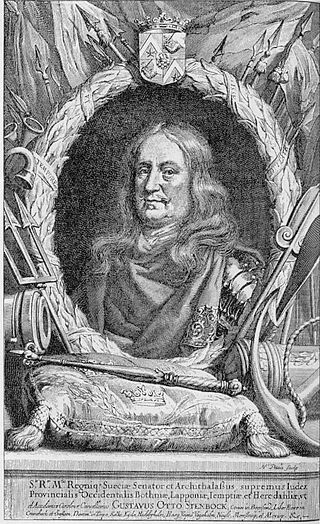
Gustaf Otto Gustafsson Stenbock was a Swedish military officer and politician.

Ebba Magnusdotter Brahe was a Swedish countess, landowner, and courtier. She is foremost known for being the love object of King Gustavus Adolphus of Sweden, and because he wished to marry her prior to his marriage, plans which were however never realized. Their love affair has been famous in the Swedish romantic history and the subject of fiction, and are documented in their preserved correspondence.
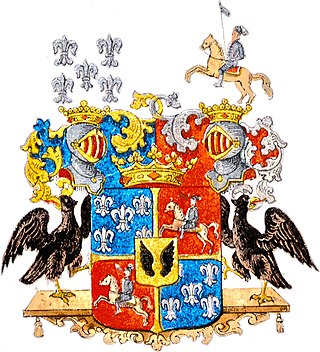
Brahe is the name of two closely related Scanian noble families who were influential in both Danish and Swedish history. The noble families became extinct in Denmark in 1786 and in Sweden in 1930.
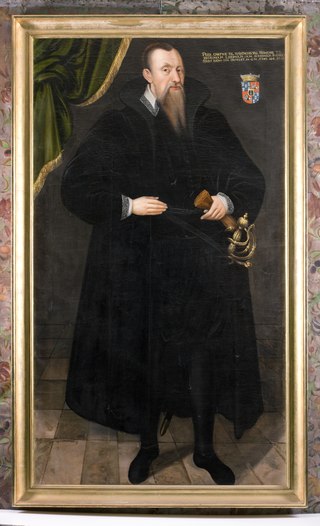
Per Brahe the Elder (1520–1590) was a Swedish statesman.

Count Magnus Brahe (1564–1633) was a Swedish noble. Being both Lord High Constable and Lord High Steward of Sweden, he was a notable figure in 17th century Sweden.

Otte Brahe was a Danish (Scanian) nobleman and statesman, who served on the privy council. He was married to Beate Clausdatter Bille and was the father of astronomers Tycho and Sophia Brahe.
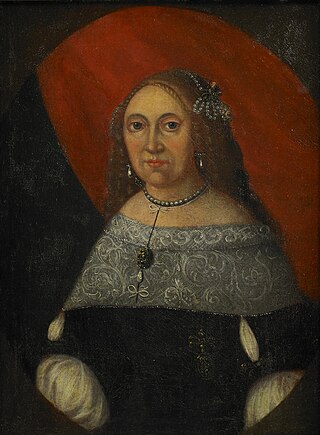
Margareta Abrahamsdotter Brahe was a Swedish aristocrat and court official, Landgravine of Hesse-Homburg by marriage to Frederick II, Landgrave of Hesse-Homburg. She aroused a lot of attention with her marriages, which were considered scandalous.
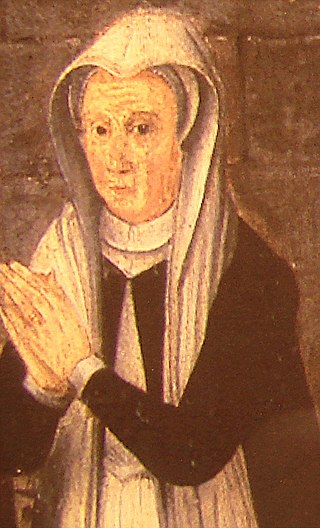
Beate Clausdatter Bille was a Danish noblewoman, a member of the royal court, Chief Lady-in-Waiting to Queen Sophie from 1584 to 1592, the wife of statesman Otte Brahe, and a feudal fiefholder in her own right following the death of her husband. She succeeded her sister-in-law Inger Oxe, who held the office from 1572 to 1584, as chief lady-in-waiting to Queen Sophie. Beate Bille was the mother of astronomers Tycho Brahe and Sophia Brahe.
Events from the 1540s in Denmark.
Events from the 1550s in Denmark.
Events from the 1570s in Denmark.

Elsa Elisabeth Brahe, was a Swedish countess and duchess, married to Adolph John I, Count Palatine of Kleeburg, Duke of Stegeborg, the brother of king Charles X of Sweden.
Events from the year 1689 in Sweden

Margareta Brahe was a Swedish courtier; hovmästarinna to princess Anna Vasa of Sweden, from 1591.

Næsbyholm is a manor house and estate located east of Tybjerg Lake, between Sorø and Glumsø, in Næstved Municipality, some 70 km (43 mi) southwest of Copenhagen, Denmark. Since 1610, Næsbyholm and Bavelse have had the same owners. The three-winged Dutch Renaissance-style main building was reconstructed after fires in 1932 and 1947, incorporating elements from 1585. It is now used as a venue for weddings, conferences and other events. The scenic park was laid out in the 18th century. The Næsbyholm-Bavelse estate covers 1,424 hectares of land (2012), of which approximately half is forest.
Steen Ottesen Brahe was a Danish military officer and landowner.

Steen Ottesen Brahe was a Danish privy counsellor and landowner.

Gustaf Wasa is a 1928 Swedish silent historical epic film directed by John W. Brunius and starring Gösta Ekman, Edvin Adolphson and John Ericsson. It is based on the life of the sixteenth century Swedish king Gustav I of Sweden. It was released in two parts, premiering a week apart.

Erik Brahe, at Sundholmen Castle in Västergötland, died 15 April 1614 in Danzig in Poland, was a Swedish governor, councilor and count of Visingsborg.